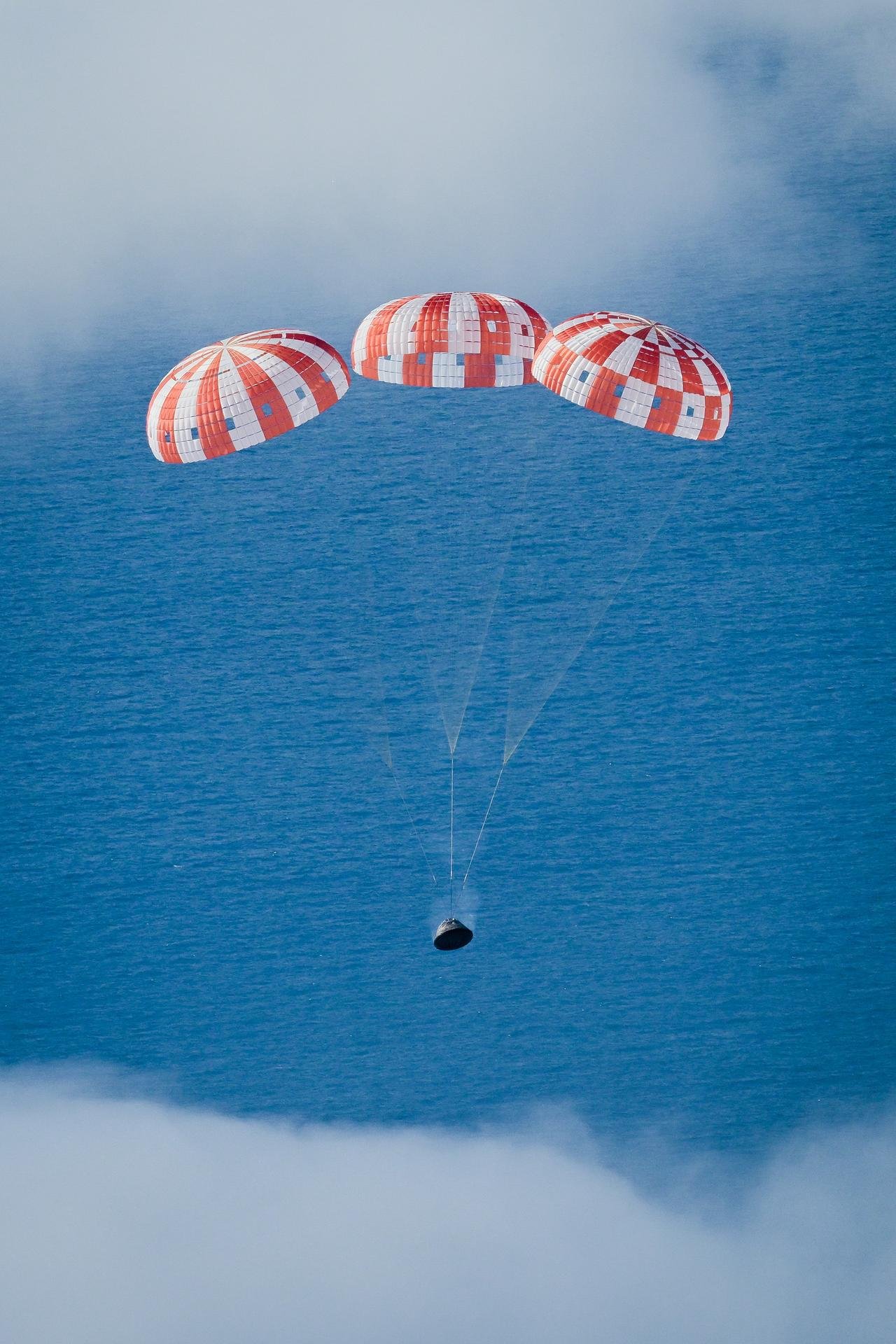
Image: NASA

Image: NASA

Image: NASA

Image: Artemis I Orion Spacecraft / USS Portland
NASA Artemis Moon Tree
A Moon Tree for The Chihuahuan Desert
I'm thrilled to announce the successful acquisition of Moon Tree seedling 203 from NASA's Artemis I mission! My proposal was selected from thousands of nationwide applications, securing this extraordinary plant that completed a lunar orbit in 2022.
Moon Trees are one of NASA's most fascinating yet lesser-known scientific experiments. The story begins in 1971 when Apollo 14 astronaut Stuart Roosa, a former U.S. Forest Service smokejumper, carried approximately 500 tree seeds in his personal kit during the lunar mission. These seeds journeyed to the moon and back, orbiting our celestial neighbor 34 times as Roosa piloted the command module while Alan Shepard (who famously brought along three golf balls and a makeshift club to tee off on the surface of the moon) and Edgar Mitchell explored the lunar surface below.
Upon their return to Earth, the seeds were germinated by the U.S. Forest Service, successfully growing into saplings. The resulting Moon Trees were then distributed across the United States, and several to international locations, as part of the 1976 U.S. Bicentennial celebrations.
What makes this experiment particularly elegant is its profound symbolism. In an era dominated by technological achievements, the Moon Tree project represented a unique biological complement to the space program. These living monuments connected cosmic exploration with terrestrial life in a tangible way.
The scientific value of the Moon Tree experiment extended beyond mere novelty. Researchers were interested in determining whether exposure to microgravity and cosmic radiation would affect the seeds' viability or lead to mutations. The way the Moon Trees developed compared to Earth-bound counterparts provided information about the effects of space conditions on plant genetics and development.
Original Moon Trees continue to thrive. They stand as living scientific specimens that have demonstrated remarkable longevity despite their extraterrestrial journey. Some have produced viable seeds of their own, creating second-generation Half-Moon Trees!
While few people would ever touch a moon rock, many could visit, touch, and stand beneath a living piece of space (and Earth) history. These trees became living explainers of humanity's relationship with space exploration. They transformed the rarity of lunar missions into growing entities that communities could observe and connect with directly. Each tree planted established a literal root connecting Earth to lunar exploration.
NASA's revival of the Moon Tree program through the Artemis missions represents a continuity in this scientific and cultural legacy. The Artemis I mission in 2022 carried a new generation of seeds into lunar orbit, creating a parallel to the Apollo-era experiment but with modern scientific protocols and analysis capabilities.
This continuation honors the original program while incorporating advances in botanical science, genetics, and space biology that have occurred in the intervening decades. The new Moon Trees benefit from more sophisticated analysis methods to study potential subtle effects of space exposure while continuing the tradition of creating living connections between communities and space exploration.
Seedling 203 has traversed an exceptional journey from space aboard the Orion spacecraft to its germination under the expert care of USDA scientists and NASA's Office of Strategic Infrastructure Logistics Management. I was delighted to receive this space plant via standard commercial delivery. A seedling that had orbited the Moon at nearly 25,000 mph, traveled over 1.4 million miles in space, and represented years of scientific cultivation arrived in a cardboard box with a tracking number like any package. This mundane final mile of the tree's journey prompts appreciation for complex chains of connection and extraplanetary logistics.
The Moon Tree will find its permanent home in Marfa, Texas, establishing a living monument that directly connects our community to humanity's ongoing space exploration initiatives. This addition creates not only substantial educational opportunities but also establishes a permanent scientific and historical landmark within our region.
The placement of this Moon Tree builds upon Big Bend's space exploration heritage. During the Apollo era, NASA utilized the region's distinctive geology as a lunar training ground, with astronauts practicing sample collection and geological identification in Big Bend National Park. This connection continues today through private space ventures establishing West Texas as a space tourism hub.
I'm currently finalizing arrangements for the 2025 public planting ceremony. Upcoming announcements will detail community participation opportunities, programming and events open for local institutions, and scientific context about the Moon Tree program's significance.
I look forward to sharing further details and invite community members to participate in this experiment in creating a living link between the Northern Chihuahuan Desert and lunar exploration. The tree, so far, is doing great!